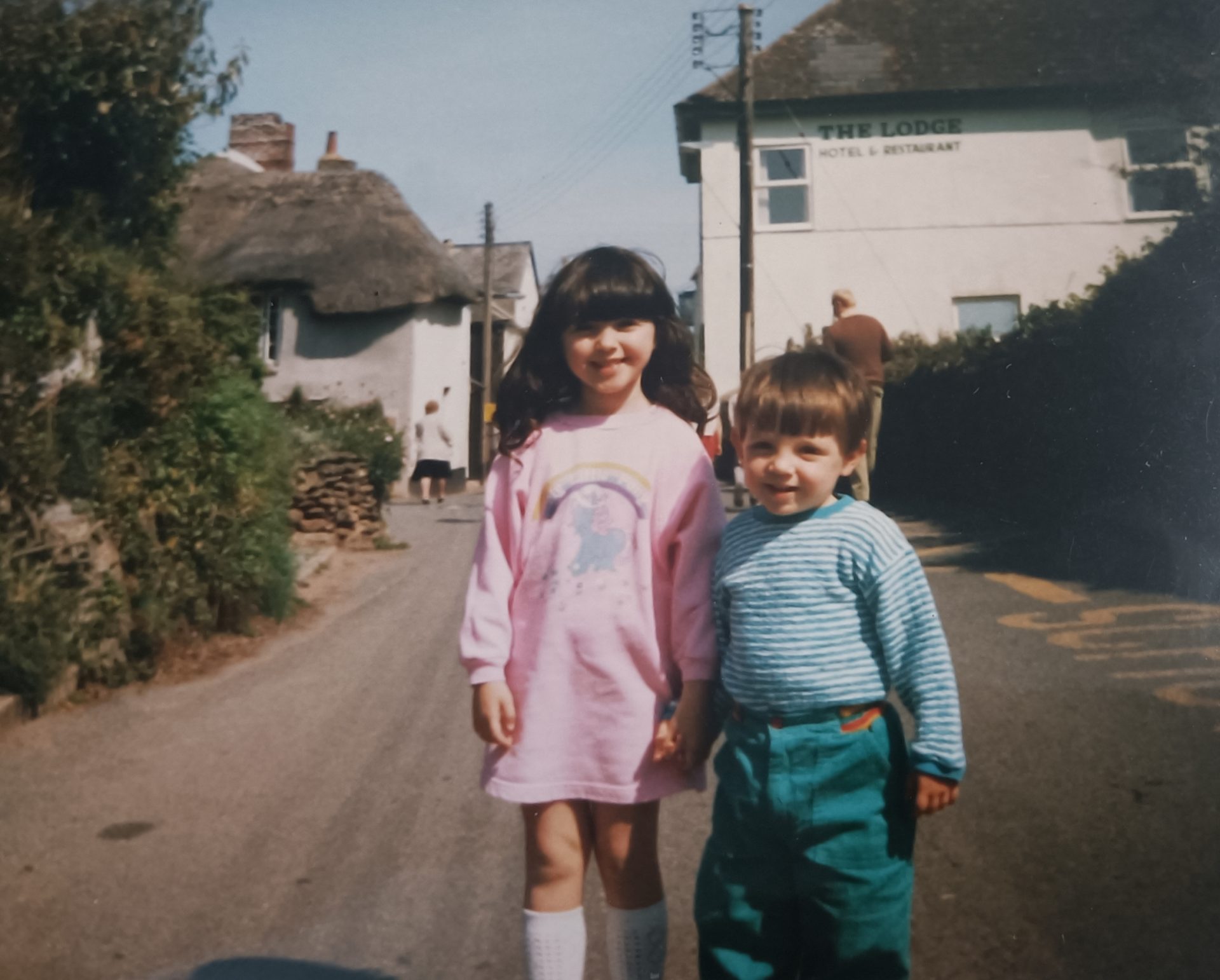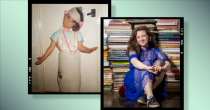What’s it like to confront your hoarding behaviours? In a moving first-person piece for Processing, a Frame Of Mind series, Plymouth’s Laureate Of Words, Laura Horton, reveals the moment she realised her sample sale habit was a sign of a bigger problem.
In 2016, I had major surgery on my head. I was told to rest, but two days into my recovery, I saw an advert for a Mary Katrantzou sample sale. My instinct told me not to go. I was exhausted and sore, and my thick curly hair was still matted with blood because I couldn’t risk getting my stitches wet. But my fear took over – the fear that I would miss something special.
In the end, the adrenalin got me there – but it didn’t last long. I arrived early, but the sale was busy, pushy and full on, and I quickly felt faint. I didn’t want to leave though. The sale was good, and I wanted to make sure I’d scouted the place out properly before I went back home to rest. Before long, my arm was buckling under the weight of all the items I’d picked up, and I nearly collapsed on a pensioner. I left with a few items, but I also felt weak, foolish and ashamed. I knew I should’ve been looking after myself – but I couldn’t help it.
You may also like
“Autism made me feel like I was on an alien planet – now I’m sharing the reality of neurodiversity on a hit Netflix show”
For as long as I can remember, I’ve always loved clothes. I can still picture my favourite outfits as a child: a pink needlecord dress and a matching jacket, a Minnie Mouse suit and a pair of pink patent shoes. I attached meaning and comfort to items even back then. When I lost my Minnie Mouse suit on holiday, I was distraught. It felt like I’d lost something truly significant.
As I grew older, my love of clothes continued. I loved leafing through magazines and trawling charity shops for outfits to recreate, and when I moved to London at 27, I discovered the wonder of sample sales. I remember them so fondly: Isa Arfen, where I got a deconstructed green shirt and high-waisted skirt; Christopher Kane, where I found a crochet cashmere skirt for £10; and Vivienne Westwood, where the shoes were £20 and I was served early because I was the only one not fighting and swearing at the staff.
It was exhilarating to find these beautiful, luxurious things, but it didn’t take long until buying and not being able to let go of things became central to my life. I never got into debt – most of my purchases were 20p jumpers at car boot sales or from the pound bin in my local charity shop – but my belongings were beginning to take up a noticeable amount of space and time. Being at home began to make me feel claustrophobic, and I worried what my housemates might think if they came into my room.

It wasn’t until I moved back to my parents’ house in Devon almost 10 years later that I was confronted by how much I’d amassed. I sold around 400 items before I moved back, but my huge moving van was still stuffed to the brim, and my parents were shocked by how much I’d collected. I remember my dad telling me he thought I didn’t have any furniture, and me having to explain that it was all clothes. I felt like I was regressing and that these things were not only holding me back, but were now impacting my family.
Prior to my move, I knew my behavioural patterns weren’t healthy – I’d often lie to my housemates about where I’d been and what was in my bags because I was ashamed of what they’d think – but it took me a long time to recognise those patterns as signs of hoarding. I think the main reason why I struggled was because I’d never seen hoarding behaviours like mine in films or on TV. The people I saw in the media were often people who couldn’t access their homes at all, portrayed as lazy, dirty, often mad or senile. That’s not to say those portrayals aren’t realistic in some situations – I just didn’t see myself reflected in them.
My move back home made me reconsider everything. I’d struggled with my mental health in my teens and 20s; I was an anxious young person, and my leg would shake If I was asked to stand up and speak. Was it possible that my behavioural patterns were being fuelled by my anxiety?
Once I was settled in Devon, I started to see a psychotherapist. I was 37 by this point and I’d been home for about a year. The therapy I’d been offered through the NHS for anxiety had never lasted long enough to get to the bottom of anything, so I paid for private help. Through this, I realised that it was possible I had OCD (although I’m currently on a waitlist for this diagnosis), and started working to unpick my thought processes and find ways to cope. Being away from the sample sales in London allowed me to analyse how I felt and behaved when I had the urge to shop or couldn’t throw things away. Slowly, I started to change my habits.Instead of going shopping, I took myself for a coffee, did some writing or went for a long walk.
Nowadays, writing has become an important part of my life and routine, and the changes I have made during therapy have already had a positive impact on my life. It’s not always been easy – on the anniversary of my friend’s death, I took myself shopping on instinct. But I’m so much better at slowing down and carefully choosing things now, rather than kneejerk reacting.

Since coming to terms with my hoarding behaviours I’ve held a number of sales to cut down my clothing collection, and I’ve donated a lot to charity. I’m also planning more sales and have connected with the charity Hoarding UK, who were really kind and responsive. There are lots of support networks out there.
I’ve also started a number of projects. One of the things I’ve found hard about letting things go is that it feels like you’re losing a memory, a hope or an anecdote you attached to the item, and this is something others I’ve spoken to have experienced too. That’s why I’ve started Hidden By Things, a podcast and drive to encourage people to let things go by sharing the stories of their garments. Labels in the donated clothing will alert the buyer to the fact the item of clothing they’re receiving has a story, and they can find it if they want to.
I’ve also written a play called Breathless, which was nominated for and won numerous awards at the Edinburgh Fringe last year, and is coming to London this month. Breathless has fictional characters and elements but there are many parts of it that are based on my experience. It was important for me to write it because I’d never seen a play about hoarding behaviours with a younger character before, let alone one who wasn’t at the extreme end of the spectrum.
You may also like
“I was born with a life-threatening heart condition, but it was medical trauma that left the deepest scars”
The audiences so far have been incredible, and I hope people in London enjoy the play too. I’ve had loads of people speak to me post-show and tell me the show had made them feel less alone, or that it helped them to understand a loved one’s hoarding behaviours. I even had a really emotional conversation with my brother who said the show helped him to understand where I was coming from.
I hope as I reach more audiences and work on Hidden By Things, I can continue to demystify hoarding behaviours and put people, not their things, at the centre of the conversation. Hoarding behaviours impact a wide range of people, not just those we typically see on TV, and I hope starting these conversations will help others to spot their behaviours before they get too extreme.
Breathless by Laura Horton runs at the Soho Theatre from 7–18 February
Hidden By Things is live now
Images: Flavia Fraser-Cannon/Laura Horton
Source: Read Full Article
